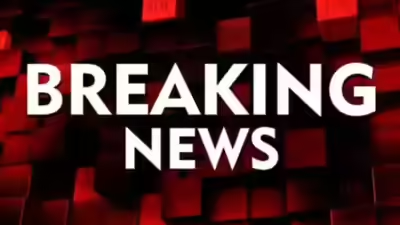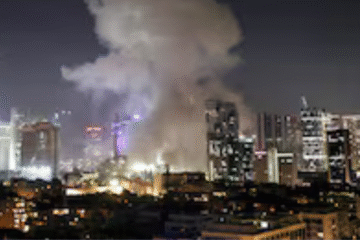In today’s digital-first world, breaking news doesn’t just unfold on TV screens or news websites — it explodes across social media platforms within minutes. From Twitter threads to TikTok hot takes, Reddit debates to Instagram stories, the internet reacts in real-time. And these reactions, often emotional, raw, and wildly diverse, are quickly becoming part of the news itself.
We no longer just consume headlines. We respond to them. We analyze, question, support, and critique — sometimes before all the facts are even known. Whether it’s a political scandal, a celebrity controversy, a global crisis, or a cultural flashpoint, today’s news doesn’t live in isolation. It breathes through the comments, hashtags, and viral posts of millions of people online.
So, what exactly is the internet saying about today’s breaking news? Let’s take a closer look at how the public now experiences world events — live, loud, and online.
The Instant Reaction Era
Gone are the days when people waited for the evening news to get the full picture. Now, within seconds of a breaking story, users are posting reactions, memes, updates, and outrage online. Hashtags begin trending. Livestreams begin. Screenshots fly.
Sometimes the reaction precedes the actual story. A cryptic tweet or a blurry clip might spark a wildfire of theories long before a news outlet confirms anything.
For example, when a well-known figure is suddenly “canceled,” the internet doesn’t wait for a full explanation. Instead, people piece together bits of information and jump to conclusions — often before facts are verified.
In 2025, the court of public opinion opens fast and closes slowly.
Twitter (X): The Real-Time Newsroom
Twitter, now known as X, continues to be the internet’s live commentary booth. Journalists post developing updates. Politicians release statements. Celebrities issue apologies. And regular users react in real time with opinions, jokes, anger, and applause.
When a story breaks, X trends tell you where the public stands within minutes. For some, it’s the place to learn what happened. For others, it’s a platform to say what they think — or to make it go viral.
But the chaos of X also means disinformation can spread just as fast as facts. A single misleading post can gain momentum and shape narratives, especially if it aligns with existing beliefs or social movements.
Still, X remains the pulse of live news, where everything is amplified and nothing goes unnoticed.
TikTok: Breaking News Goes Visual
TikTok isn’t just for dance trends and viral sounds anymore. It has become a powerful platform for live reactions, breaking analysis, and even citizen reporting. Many users now first hear about major stories through TikTok — often via creators they trust more than traditional outlets.
Creators break down complex issues with visual storytelling. Some go live during press conferences. Others explain what mainstream media “isn’t telling you.” Their content isn’t always accurate, but it is often compelling — and that makes it spread.
TikTok’s algorithm personalizes what you see, which can be a double-edged sword. You’re more likely to see content that reflects your views, but less likely to be exposed to other sides of the story. Still, in terms of emotional impact and immediacy, TikTok reactions hit differently.
Reddit: The Deep Dive Lounge
Reddit is where internet users go for context, conspiracy theories, and deep conversations. Whether it’s in r/news, r/worldpolitics, or dozens of niche subreddits, users break down stories, analyze motives, and bring receipts.
Reddit’s upvote system means thoughtful, fact-driven comments can rise above emotional takes — though that’s not always guaranteed. Misinformation still happens, especially in fast-moving threads. But Reddit tends to offer more layered reactions compared to the quick bursts seen on other platforms.
Live threads on Reddit often include user-generated timelines, crowd-sourced analysis, and corrections. It’s a place where news is unpacked, not just reacted to.
Instagram: The Opinion Feed
Instagram is where reactions turn visual. From quote slides to emotional stories, people use the platform to align themselves with causes, celebrities, and issues. It’s less about breaking the news and more about responding to it — loudly and aesthetically.
Influencers often react to breaking stories with personal reflections, long captions, or curated reposts. It’s common to see “info posts” with colored graphics summarizing complex topics. Some are helpful, some oversimplified, and others flat-out misleading — but they spread fast.
Instagram’s strength is its reach. People who don’t follow news outlets still get exposed to major events through stories and reposts. That visibility is shaping how millions view global issues.
YouTube: The Aftershock
YouTube is where the reactions deepen. Within hours of breaking news, reaction videos, explainers, and commentary streams flood the platform. Popular creators weigh in, offering context, criticism, or satire.
These videos often get more views than the original news clip. Audiences turn to creators for clarity, confirmation, or comfort. And because many YouTubers specialize in storytelling and analysis, their content can influence how people understand a story long after the initial headlines fade.
However, the long-form nature of YouTube means some videos are posted after the facts evolve — meaning old or wrong narratives sometimes linger. Even so, the platform is a major part of how stories are processed, not just reported.
When the Reaction Becomes the Story
In some cases, the internet’s response becomes bigger than the original event. A celebrity says something controversial, but it’s the backlash that makes headlines. A protest starts small, but online attention turns it into a movement.
News doesn’t end with a report anymore. It evolves through commentary, memes, parodies, and think-pieces. Public reaction becomes part of the narrative. Sometimes, it even creates the narrative.
That power to shape perception is no longer limited to editors and producers. It now belongs to anyone with a phone and a point of view.
The Dark Side of Live Reaction Culture
Of course, there are risks to this always-on reaction environment.
- Misinformation spreads easily. People often react before verifying.
- Cancel culture can escalate quickly. Lives and reputations can be damaged before facts are confirmed.
- Public discourse becomes polarizing. Nuance gets lost in hot takes and hashtags.
- Emotional fatigue increases. Constant exposure to tragedy, outrage, and conflict can lead to burnout.
The challenge is finding balance. The internet gives everyone a voice, but that voice carries weight. What we say — and how fast we say it — matters.
Final Thoughts
Live reactions are the new front page. In 2025, breaking news isn’t just about what happened — it’s about how people respond to it, shape it, and sometimes even rewrite it.
From quick tweets to thoughtful Reddit debates, from reaction videos to IG story slides, the internet has made the public part of the storytelling process. The news is no longer delivered to us. It’s co-authored by all of us.
That’s powerful. But with power comes responsibility.
In a time when everyone can speak, the most valuable voices are not the loudest — they’re the ones who take a moment to think before reacting, question before sharing, and listen before judging.
So, the next time breaking news hits your feed, ask yourself not just what is happening — but how the world is responding, and why it matters.


